I recently upgraded from the Canon Digital Rebel 300D kit lens, the EF-S 18-55mm f/3.5-5.6, to the Canon EF 17-40mm f/4.0 “L-glass” lens. As one would expect, and hope , the much more expensive L-series lens has proved much more capable optically and mechanically. But I thought before I got rid of the EF-S 18-55mm, I’d post an entry with a quick comparison.
Note: This comparison was made with the Mark I version of the 18-55mm lens. Canon released a Mark II along with the release of the Digital Rebel XT 8MP body, which supposedly changes some of the optical characteristics. So take this comparison with a grain of salt, as they say.
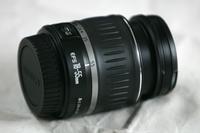 | 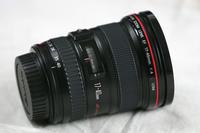 |
First off, this is not intended to be a full review of either of these lenses. there are plenty of reviews out there on the web, and anyone seriously considering buying either of these lenses should certainly review those. This entry is just a quick side-by-side of the two lenses, to satisfy my own curiosity.
The 18-55 is an extremely light, “consumer” zoom, all plastic. The weight makes it really convenient. But the other mechanics of it are definitely lower-grade. The front element moves when zooming and the focusing ring is external, turns filters when focusing, and is difficult to manipulate manually. The 17-40 is a pro lens from Canon’s high-end series, and although much heavier, also feels rock-solid. It’s all metal, has internal focusing, and a real USM motor mechanism. It also is somewhat larger, and has a much bigger front lens element, 77mm as compared to the smaller 58mm (much cheaper filters!) of the 18-55.
The 18-55 lens is usable only on the Canon Digital Rebel 300D, as it uses the new EF-S mount. The “S” stands for short-back, and indicates that the lens back protrudes farther into the camera body than allowed by cameras other than the 300D. There are resources on the web with instructions for modifying this lens physically to mount on all EF-mount bodies, which could make it a great inexpensive ultra-wide-angle lens on film bodies. The 17-40 works on all Canon EF-mount cameras.
It’s worth mentioning again the “digital crop-factor” of most Canon digital cameras (the exception being the full-frame $8000 Canon 1Ds). These digital cameras operate with a sensor frame smaller than that of a 35mm film frame, and thus effectively crop out the edges of the frame, with a factor of 1.6. So the 18-55mm lens has an equivalent view of 28-88mm, and the 17-40mm has an effective view of 27-64mm. This means that although these lenses are extremely wide-angle lenses optically, they are more standard wide-zooms on digital cameras. As a side note, I haven’t heard anything about the optically quality at the edges of the 18-55 on a full-frame body (as it doesn’t naturally fit those), but I expect that it is not stellar, since the edges of the frame were never intended to be captured on the sensor.
The only real question I’ll address here is the difference in zoom-range for these lenses, and the sharpness of the lens wide/short, and open/closed. Hopefully, I can give some test-images that will let you decide for yourself whether the more expensive 17-40 lens is worth the money, or meets your photographic needs.
Here’s a full-frame shot to see the different field of view between the 17mm and 18mm ranges on these two lenses. There isn’t much difference when we are this wide already. Remember, this is a 35mm equivalent of 27mm and 28mm, respectively. Note: All the photos were processed using auto-levels, auto-contrast, auto-color, and Unsharp Mask of 100%, radius of 1.0

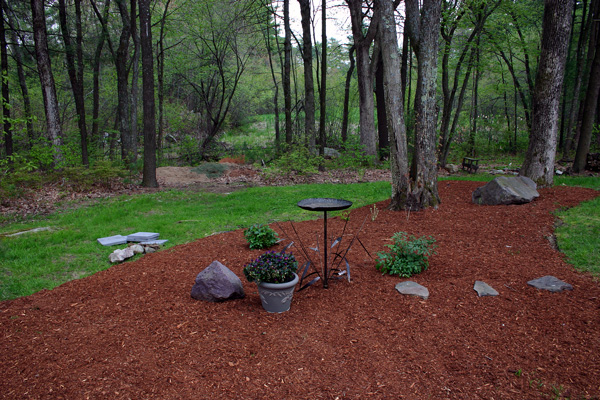
We’ll start by taking a look at 3 shots at the widest angle on each of these zooms. They are taken first with the largest aperture, then at the forgiving f/8.0 , and lastly, fully stopped down.
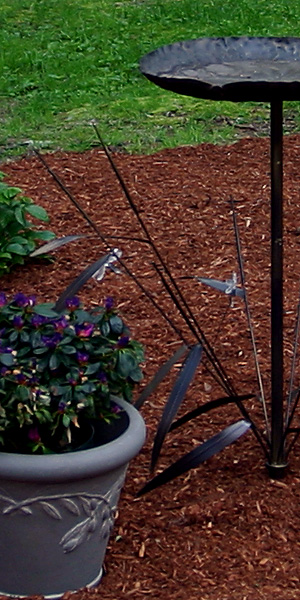 | 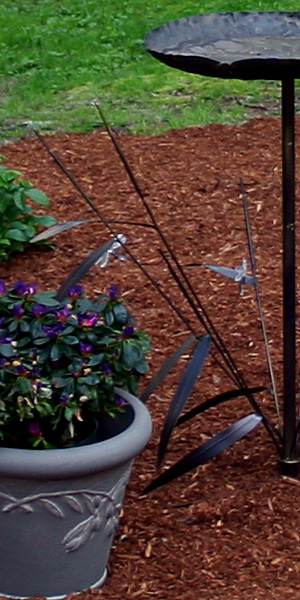 |
Wide open, the 18-55 seems pretty dismal. To be fair, it is at 3.5, while the 17-40 is at 4.0. Nevertheless, there isn’t anywhere on the mulch that’s crisp. The lens quite obviously suffers wide-open.
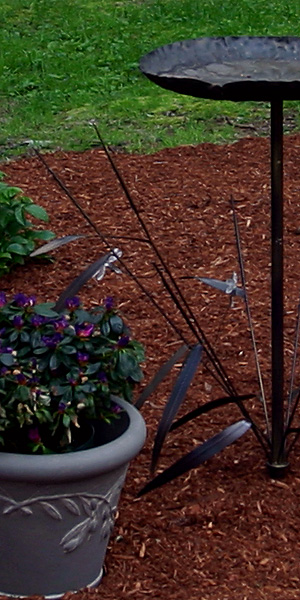 | 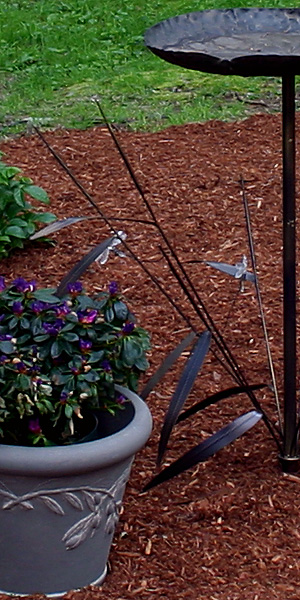 |
At f /8.0, the story is different. The EF-S performs quite well. In fact, it seems to perform a little better in this particular test. I’d be surprised if this result is typical, but it shows that the EF-S is definitely in the same ballpark, in the center of the frame, for moderate apertures.
 |  |
When we close down these two lenses at wide-aperture, we see that again the 17-40 has an edge. The 18-55 is much softer, although not nearly as bad as at f /3.5. Be aware that these exposures were well over one second, due to the late evening light on the scene.
Next, let’s look at the lenses at full-zoom. Here, the field of view difference is much more apparent. The difference between an effective 64mm and 88mm is significant, and may make the 18-55 lens a much more practical choice as a “walking-around” lens. I find often that I’m craving a little more than 64mm equivalent when I’m stuck with the 17-40 lens.

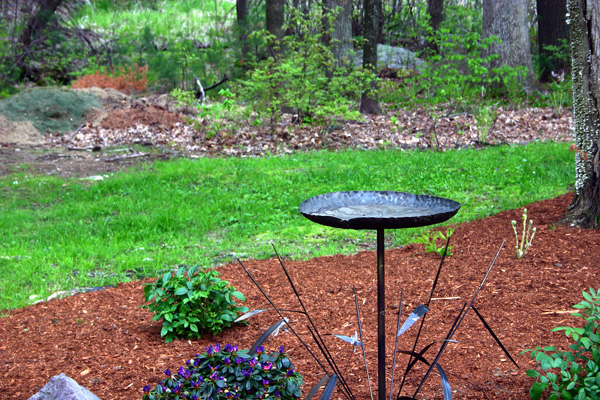
 |  |
 |  |
 |  |
I think these pictures speak for themselves. Although the zoom of 55mm is useful on the EF-S lens, the optical quality at this focal length leaves something to be desired. All the photos are quite soft, at all apertures. Even at f/8.0, the 17-40 lens easily outperforms the 18-55.
Conclusion: The upgrade to the 17-40mm “L” glass is definitely worth it if you are looking for the most crisp photos you can get, and the most flexibility. Although there are faster wide-angle lenses out there, a fixed aperture of f /4.0 gives enough flexibility both indoors and outside. If the EF-S lens could perform as well wide-open at the 17-40, it would be a very capable lens. But unfortunately, it doesn’t perform even close, except at middle apertures, and even that may not be true. All that having been said, is the 18-55mm lens worth the $100 in the Digital Rebel kit? Absolutely . For the money, I can definitely recommend this lens. I personally started with it, and upgraded to the 17-40mm when I was ready for more serious shooting in this range, and I wanted something that would give me the same quality as the other L-lenses I own.